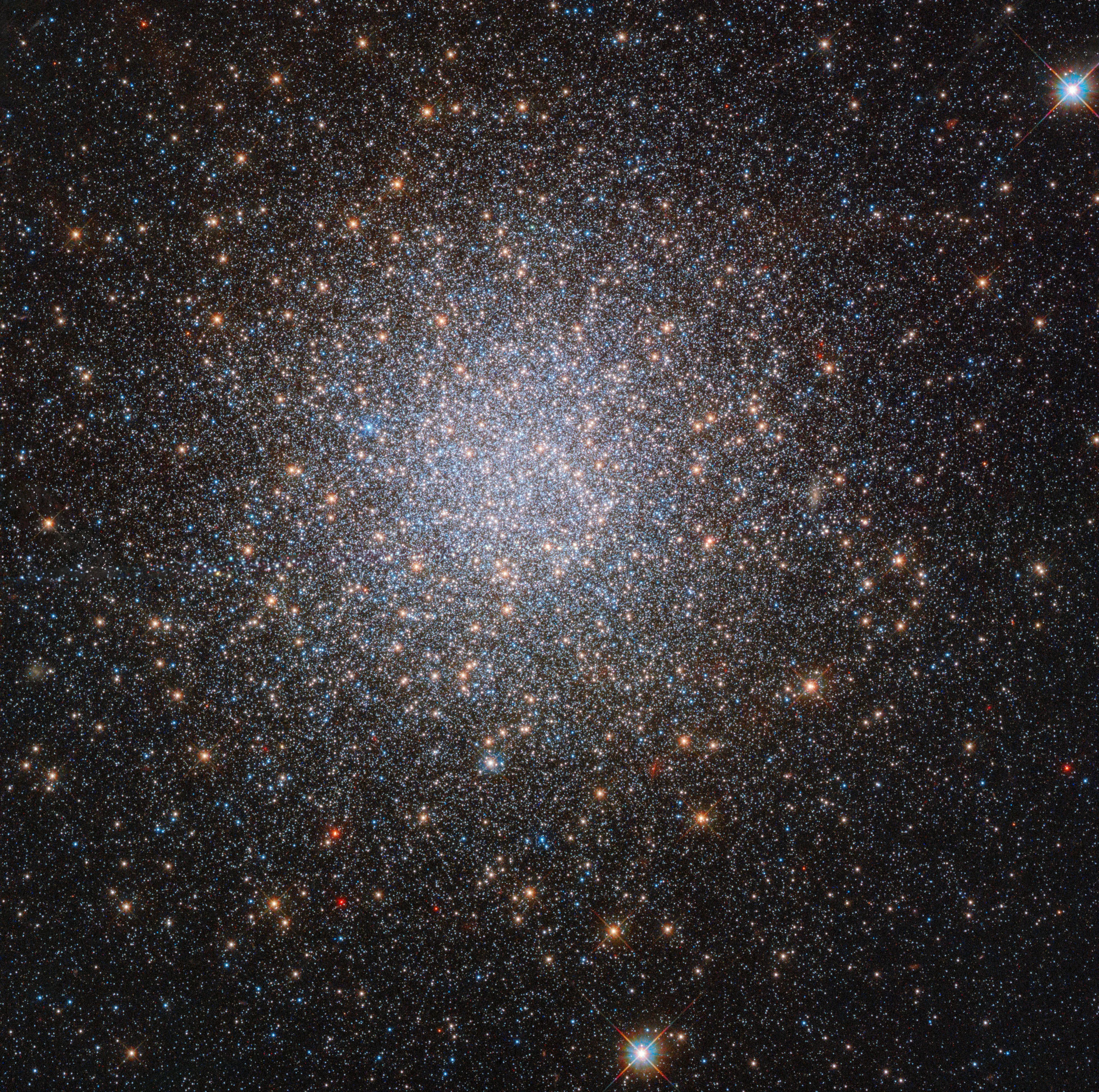2 min read

This image from the NASA/ESA Hubble Space Telescope shows the globular star cluster NGC 2419. Globular clusters are both beautiful and fascinating. They are spherical groups of stars that orbit the center of a galaxy, and in the case of NGC 2419, that galaxy is our own Milky Way. NGC 2419 is around 300,000 light-years from the solar system, in the constellation Lynx.
The stars populating globular clusters are very similar because they formed at roughly the same time. Astronomers can determine a star’s relative age by its chemical makeup, a property called its metallicity. Because stars in a globular cluster all formed at around the same time, they tend to display similar properties. Astronomers believed this similarity included their stellar helium content. They thought that all stars in a globular cluster would contain similar amounts of helium.
However, Hubble’s observations of NGC 2419 revealed that this is not always the case. This globular cluster holds two separate populations of red giant stars, and one is unusually helium rich. NGC 2419’s stars hold other elements that vary too. In particular, their nitrogen content varies. To make things even more interesting, the helium-rich stars are predominantly in the center of the globular cluster and are rotating. Hubble’s observations raised questions about the formation of globular clusters; did these two drastically different groups of stars form together? Or did this globular cluster come into being by a different route entirely?
Text credit: European Space Agency (ESA)
Media Contact:
Claire Andreoli
NASA's Goddard Space Flight Center, Greenbelt, MD
301-286-1940






